NASA Earth System Science Project Award
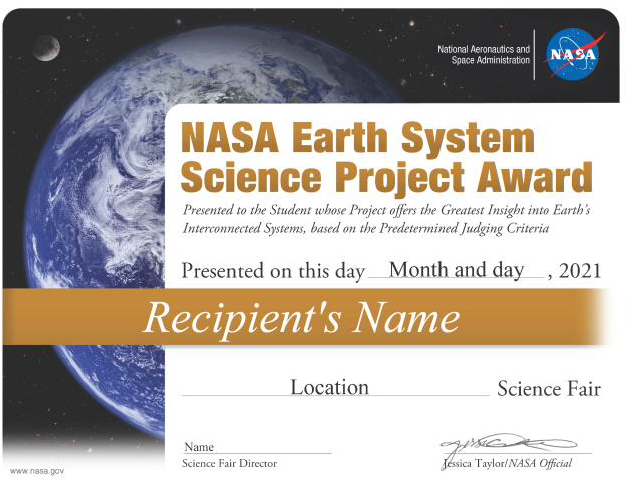
This page is intended to provide award recipients from regional science fairs within the United States with additional information and resources to help with future Earth System projects. Please complete the registration information and learn more about the NASA resources highlighted. The registration should be completed by a parent or guardian. Remember that there is an option to sign up for a webinar with a NASA scientist. During this webinar, a Subject Matter Expert will share their career path to NASA and a brief description of their work at NASA. NASA resources for student research will be discussed and a virtual tour of the My NASA Data's Earth System Data Explorer will be provided. Please have a parent or guardian register to receive the access information for the webinar. A few days before the webinar, a link will be sent for the webinar.
This is the link to submit your registration information.
The NASA Earth System Science Project Award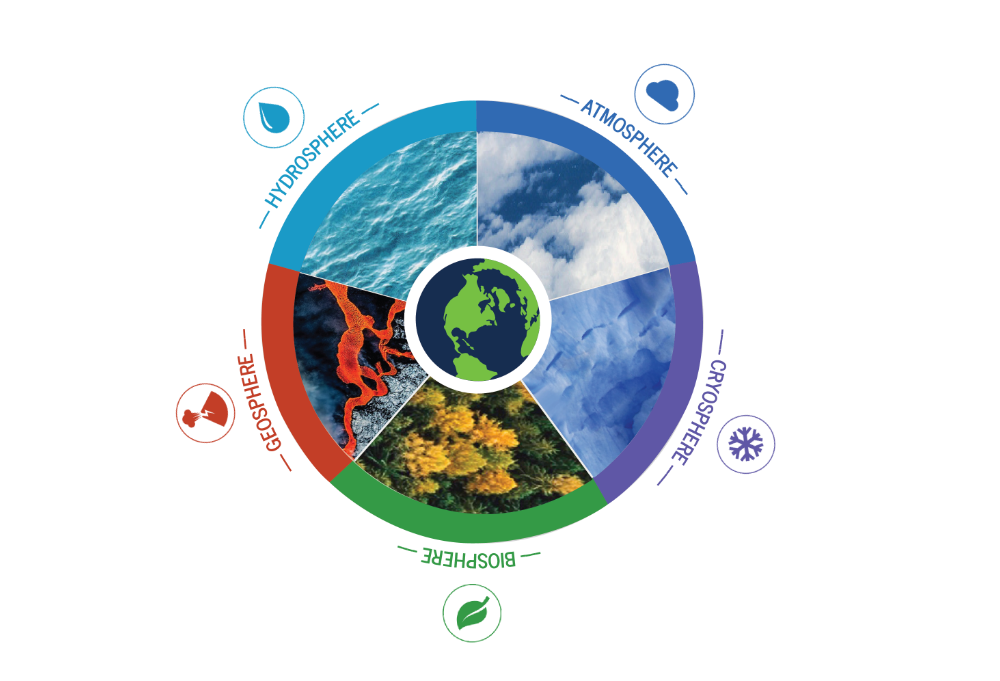
By providing the NASA Earth System Science Project Award, our goal is to increase awareness regarding the importance of scientific research in the area of Earth system science. The NASA Earth System Science Project Award should be given to the project that best demonstrates insight into Earth’s interconnected systems. The project should incorporate studies of the different components of Earth systems, their interactions and their evolution over time. It should include cause-effect relationships based on evidence that focuses on the interrelatedness of the various components of Earth systems and demonstrate a clear understanding of how those relationships affect Earth as a system.
NASA Resources
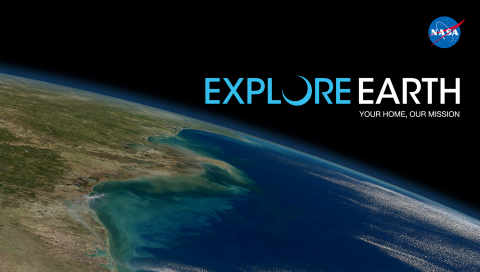
NASA studies Earth from the vantage point of space in addition to airborne and ground missions. For information on the NASA Science Directorate and Earth Science activities and programs, visit the Related NASA Resources page.
Do Science with NASA
NASA has many "citizen science" or "participatory science" projects. Through these projects, volunteers and amateurs have helped make thousands of important scientific discoveries. These projects are open to everyone around the world. You can find them on the NASA Citizen Science page.
NASA Earth System Science Award winners might be particularly interested in the GLOBE Observer project. This app allows volunteers to take several different kids of data observations using their cell phones and join the Global Learning and Observations to Benefit the Environment (GLOBE) community.
NASA Data and Visualization Tools
To continue work in the area of Earth Science, you may be interested in one of the NASA data and visualization tools highlighted below.
My NASA Data has a data visualization tool called the Earth System Data Explorer. There are many datasets available for visualization. Students can select dates and areas to visualize for particular datasets. They can also download graphs, CSV datasets and animate the images. Tutorials are available. The advantage of this tool is that you can download the data, although they are often at least a few months old.
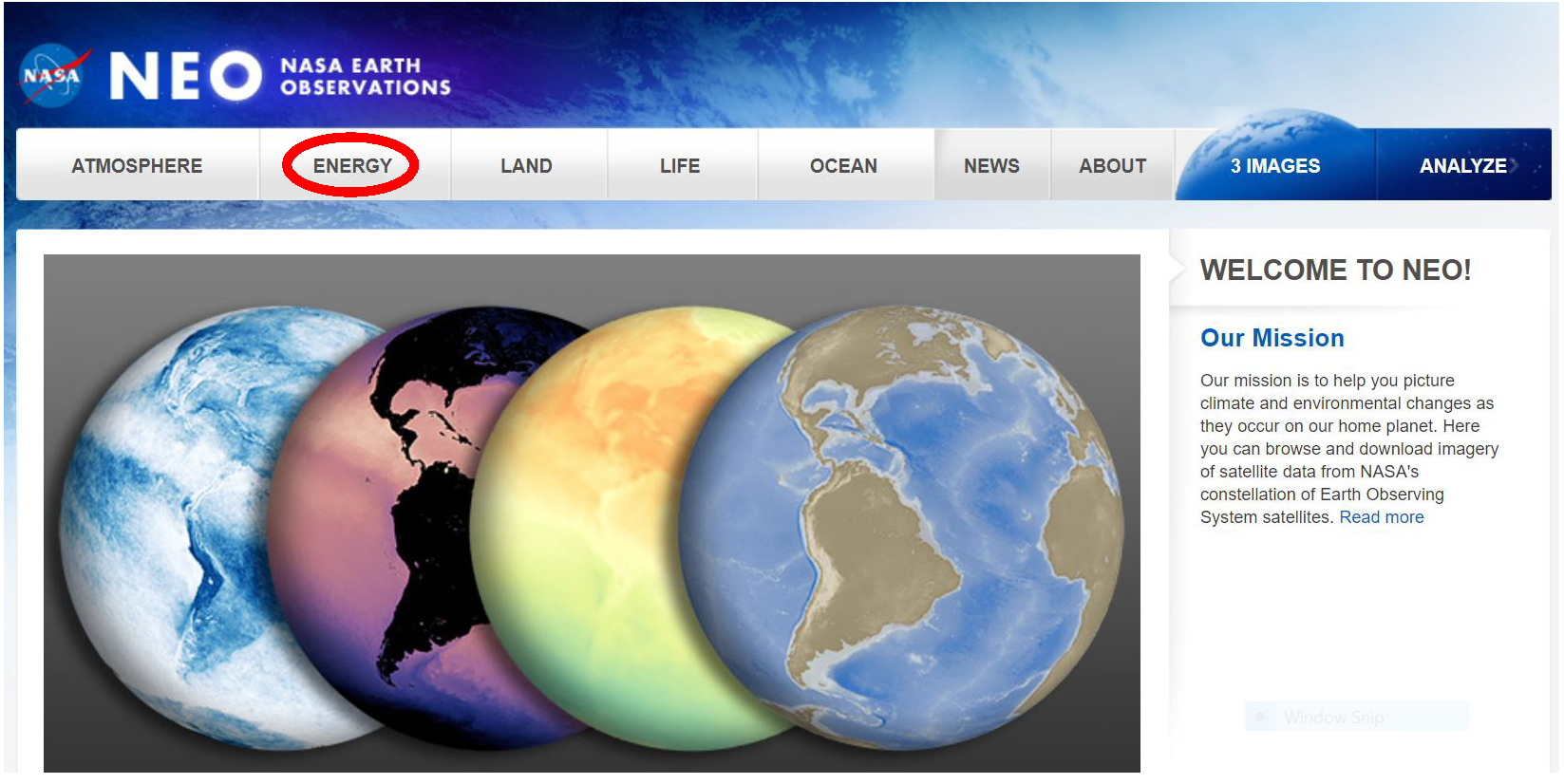
NASA Earth Observations (NEO) strives to make global satellite imagery as accessible as possible. Here you can browse and download imagery of satellite data from NASA's constellation of Earth Observing System satellites. Over 50 different global datasets are represented with daily, weekly, and monthly snapshots, and images are available in a variety of formats including JPEG, PNG, Google Earth, and GeoTIFF. The new NEO analysis tool provides an easy way to compare imagery online and this new blog series highlights different Earth science concepts by pairing an introductory video with an investigation of relevant satellite imagery. A tutorial can be found at Using NASA Earth Observations (NEO) in 10 Easy Steps. This tool provides imagery and the ability to compare datasets.
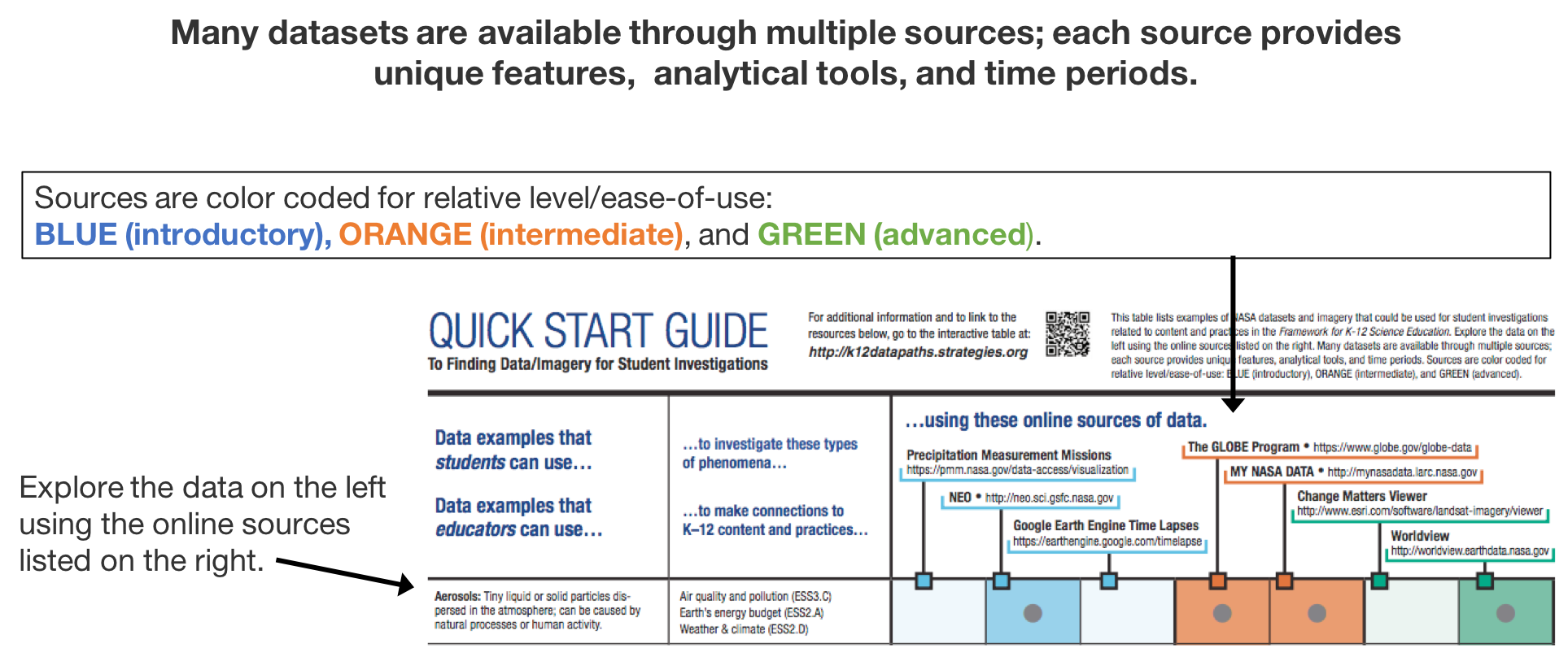
For additional sources of data and imagery, use Locating Data and Imagery for Student Investigations. This table lists examples of NASA datasets and imagery that could be used for student investigations related to content and practices in the Framework for K-12 Science Education. Explore the data on the left using the online sources listed on the right. Many datasets are available through multiple sources; each source provides unique features, analytical tools, and time periods. Sources are color coded for relative level/ease-of-use. Download the PDF for an easy to read version.
Internship Information

Students are eligible to apply for internships when they are at least 16 years old. Internship information is available at the NASA Internship Website.

